Auction house Sotheby’s will stage an auction in New York on June 11, 2015 featuring items from a private collection of musical automata within its sale of important watches.
The museum-quality pieces exquisitely represent the golden age of automata spearheaded by Pierre Jaquet-Droz in the eighteenth century, one of the most notable creators of automata that merge technology and artistry to make fascinating objects that mimic life – whether that life be human or animal in nature. The auction pieces were mainly made for export to royalty throughout Europe, Turkey, India, and China.
Many of the 21 automaton pieces set for this auction have not been seen in public for generations and are only known thanks to mentions in literature. Some of them were owned by luminaries such as King Farouk of Egypt and well-known collector and museum patron Maurice Sandoz.
The leader of the pack is the singing bird scent flask made in Geneva by Pierre Jaquet-Droz around 1785. Measuring 16 centimeters in height, the flask includes an automated singing bird, one of Jaquet-Droz’s signature elements. The articulated ivory bird is 12 mm tall and a miniature organ replicates the bird’s song.
The flask, covered in enamel and jewels and featuring a recessed medallion containing a gold sculpture of a branch and leaves with the singing bird perched atop it, as well as a built-in clock, arrives at Sotheby’s by way of famous Swiss collector Maurice Sandoz, who purchased it in 1942 from New York vintage dealer A La Vielle Russie for $2,997. It was originally created for the Chinese market like many of Pierre Jaquet-Droz’s pieces.
Its pre-auction estimate runs from $800,000 to $1.2 million.
* After-sale update: the singing bird flask set an auction record for an antique piece by Jaquet Droz, hammering at $2,530,000. (For more on this piece, please see Jaquet Droz‘s website.)
Other top automata lots
The auction also features quite a few other pieces of great interest. One of these is a gold snuff box circa 1815, attributed to Piguet & Meylan. It is decorated with pearls and contains a concealed musical automat in the shape of a lady playing a harp and a gentleman playing a lute. It also includes a timepiece. Embellished with an enamel painting of a fortune teller doing a palm reading, this piece is originally from the collection of King Farouk of Egypt.
Yet another astounding lot is a caterpillar automaton comprising 11 jointed segments made of gold and covered with gemstones and pearls that wiggles across a surface when a lever on its side is pushed. Its creator is Henri Maillardet, and it is believed to have been made in about 1820.
And, finally, perhaps of interest to dog owners, there is a barking dog pocket watch from about 1810 that was also made by Piguet & Meylan. Sotheby’s relates that there are only about 20 known barking dog watches in existence today and only two boasting the petite 39 mm diameter size of this one.
For more information, please visit www.sothebys.com/en/auctions/2015/watches-n09368.htm and www.jaquet-droz.com.
For more on Pierre Jaquet-Droz’s automats, please see Jaquet Droz’s Signing Machine: The Evolution Of Traditional Automata and to discover how the historic automata by Pierre Jaquet-Droz have influenced the modern brand, please see Jaquet Droz In Bloom: The Astonishing Lady 8 Flower Automat.

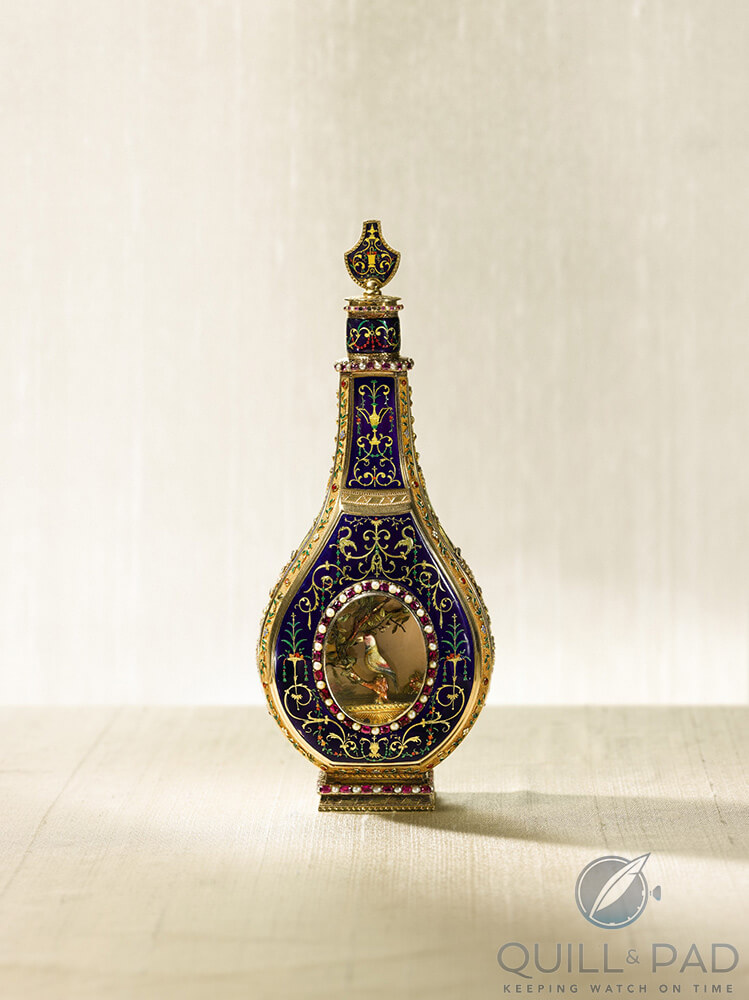
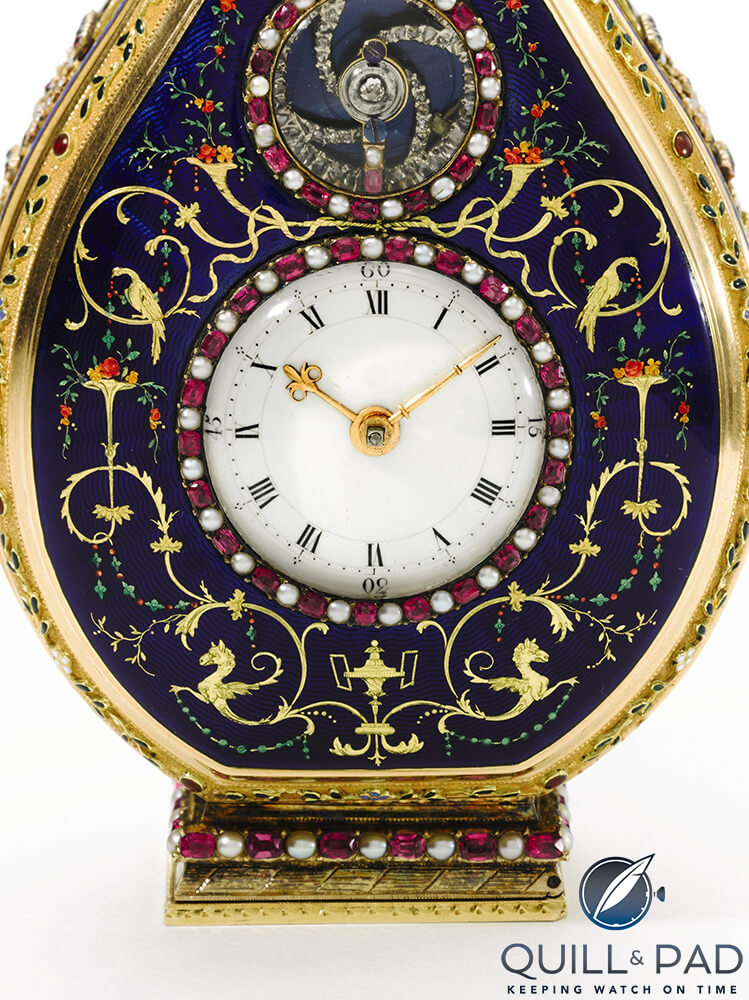
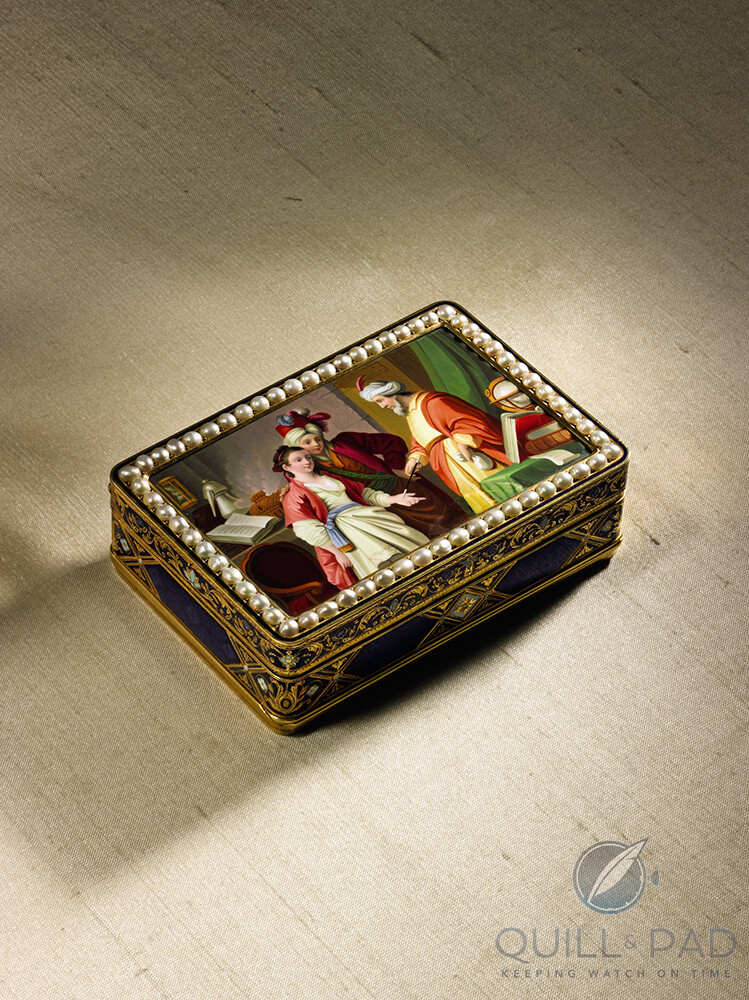
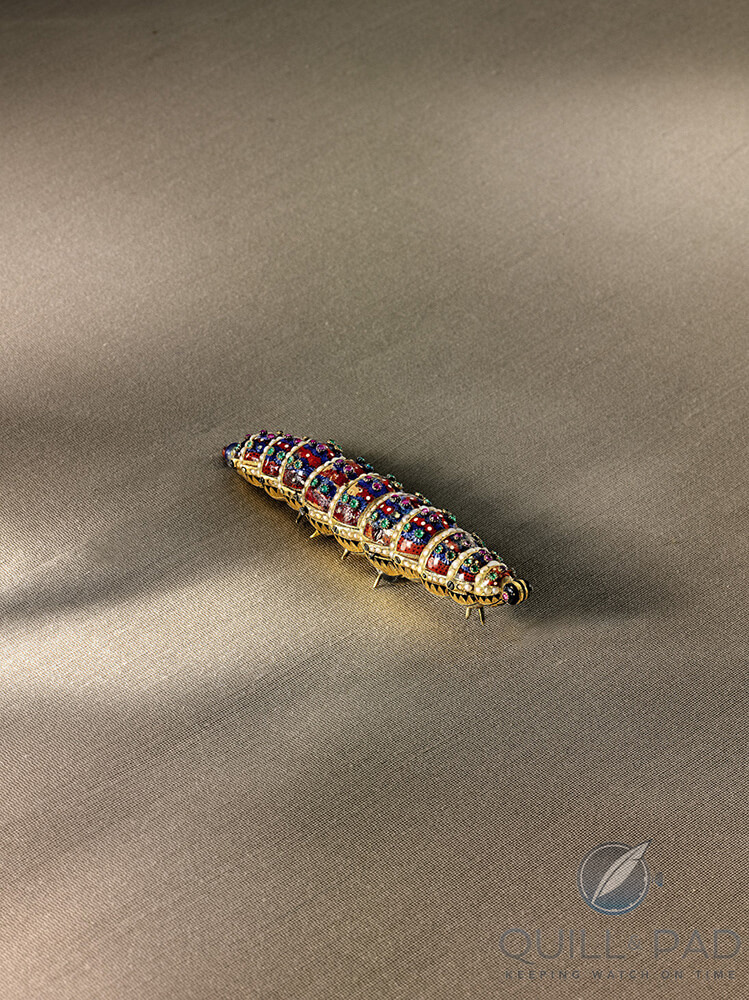
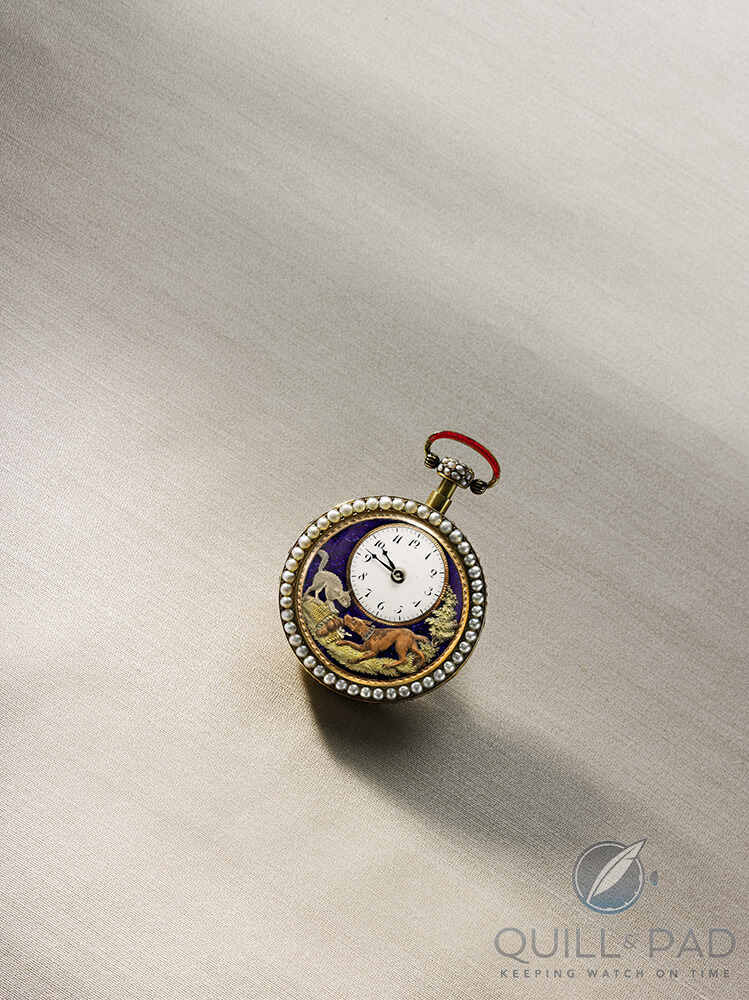
Trackbacks & Pingbacks
[…] It began with automatons; mechanisms designed to mimic living things or carry out predetermined coded instructions. Some of the most famous examples were so complicated that they looked like children and wrote with quill and pad (see Jaquet Droz’s Signing Machine: The Evolution Of Traditional Automata). […]
Leave a Reply
Want to join the discussion?Feel free to contribute!